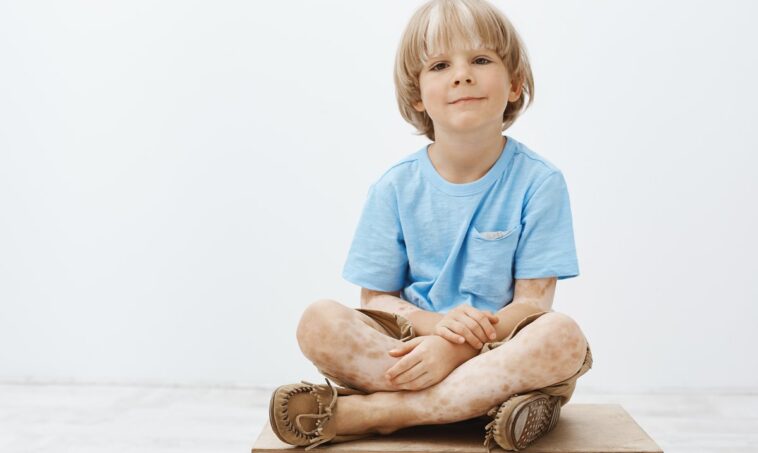A vitiligo diagnosis can bring feelings of anxiety, stress, and uncertainty. These fears can get even stronger when at the center of vitiligo diagnosis is a kid. Though all children deal with changing appearance in different ways, if your child has been faced with an untamed outbreak of vitiligo, he or she is going to need to feel loved and supported now more than ever.
Here’s how parents can help create a sense of normalcy at home while their child navigates the highs and lows of a vitiligo diagnosis.
1. Be calm and proactive
Parents should have a calm, proactive conversation with their kids about vitiligo. Let them know that it is possible that vitiligo might not spread further by putting all stress at bay. As an adult, you must empathize with the fact that newly diagnosed children may feel understandably nervous and worried about what other kids would think of them. One thing you can do to counter this is actually helping them look outward. Reassure your children that vitiligo doesn’t change anything between you and them.
2. Stick to a routine
Children need structure. Full stop! So, if you have signed up for vitiligo treatment, make sure it nicely fits in the child’s daily schedule. It will be a great relief for your kid to have a sense of a predictable day and a sense of control. We would even suggest getting your kid involved too. So, if your kid is required to put topical cream on patches a few times a week, let him or her choose the days.
3. Let your child feel their emotions
Support, expect, and normalize that they may feel very frustrated and sad about the loss of control over their skin color. In times when they are sad or grieving, don’t shout at them. Use your best emotional intelligence to turn their attention away from the sadness.
Take cues from your child, and really think a lot about balancing talking about their feelings with finding distractions. Have a family game night every few days or let them help you cook a meal.
4. Check in with them
There is a lot of misinformation circulating about vitiligo and its treatment. This is why it becomes important to find out what your child is hearing or what they think is true about the rather harmless skin condition. It’s not enough to just tell your child accurate facts, it’s important that you use it as an opportunity to explore the answers together. Use websites of trusted organizations such as Vitiligo Research Foundation for sources of knowledge information.
Many children with vitiligo often face bullying and abuse at school or online. It’s important your child know that you’re always there for them. Also, remember – “Kids who are bullied should not be expected to confront bullies; rather you should encourage them to turn to friends and family for help and support.”
5. Monitor your own behavior
Parents of children with vitiligo are anxious too. Sometimes, kids can take these emotional cues from their parents and get saddened. Kids rely on their parents to provide a sense of safety and security. So, it makes sense for parents to manage their anxiety in their own time without oversharing their fears with their children. You don’t want to impart low self-esteem or a sense of restlessness in your kid too.

